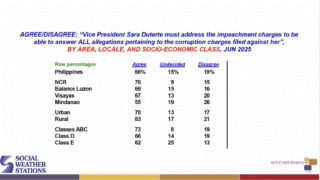The Export Development Council (EDC) expects to issue by the end of the month the first draft of the Philippine Export Development Plan (PEDP) 2014-2016, which will outline the targets, as well as product and market strategies, to boost export growth.
EDC executive director Senen M. Perlada said in a phone interview that the draft would have to undergo another revalidation among stakeholders and key export business support organizations through a consultation to be held next month.
This will be on top of the consultations held previously while the new three-year PEDP is still being drafted, he added.
But Perlada declined to reveal ahead of the Philippine Economic Briefing on Tuesday whether the group retained the target to double the country’s exports to $120 billion by 2016. Observers believe that the goal has become harder to achieve.
Philippine Exporters Confederation (Philexport), however, remained optimistic. It expects export revenues for the merchandise and services sectors to still reach $92 billion and $28 billion by 2016, respectively.
Philexport president Sergio R. Ortiz-Luis Jr. said last month that the share of the services sector could improve to 23 percent by 2016, while the share of the merchandise goods to total exports could be slightly lower at 77 percent.
This year, the goods sector is positioned to reach $75.59 billion for a share of 78 percent of the total exports, he said.
The PEDP 2014-2016 is expected to outline the export revenue targets within the three-year period in consideration of the problems affecting local and international markets.
The current Philippine Export Development Plan 2011-2013, which was approved in July 2011, focused on several core product and market strategies.
Key focus sectors are information technology and business process outsourcing; electronics; agribusiness, including fresh, processed, and marine food products and coconut; minerals; shipbuilding; motor vehicle parts; garments and textile; home style and décor, and wearables.
In terms of product strategies, the roadmap sought to enable exporters to move up the value chain, participate in higher-value processes in the global supply chain, and develop linkages for organic, natural, and certification-based offerings. Amy R. Remo



